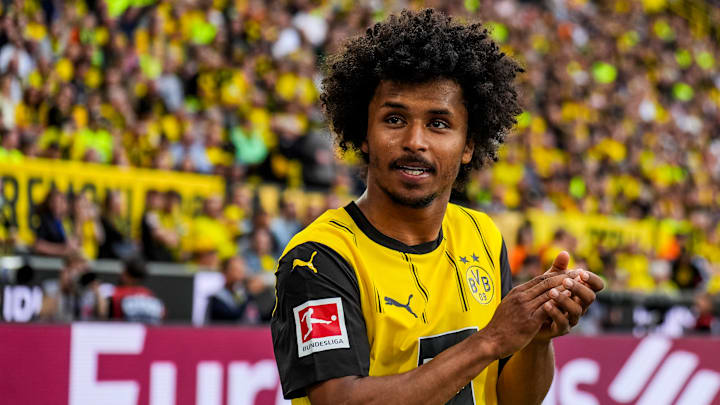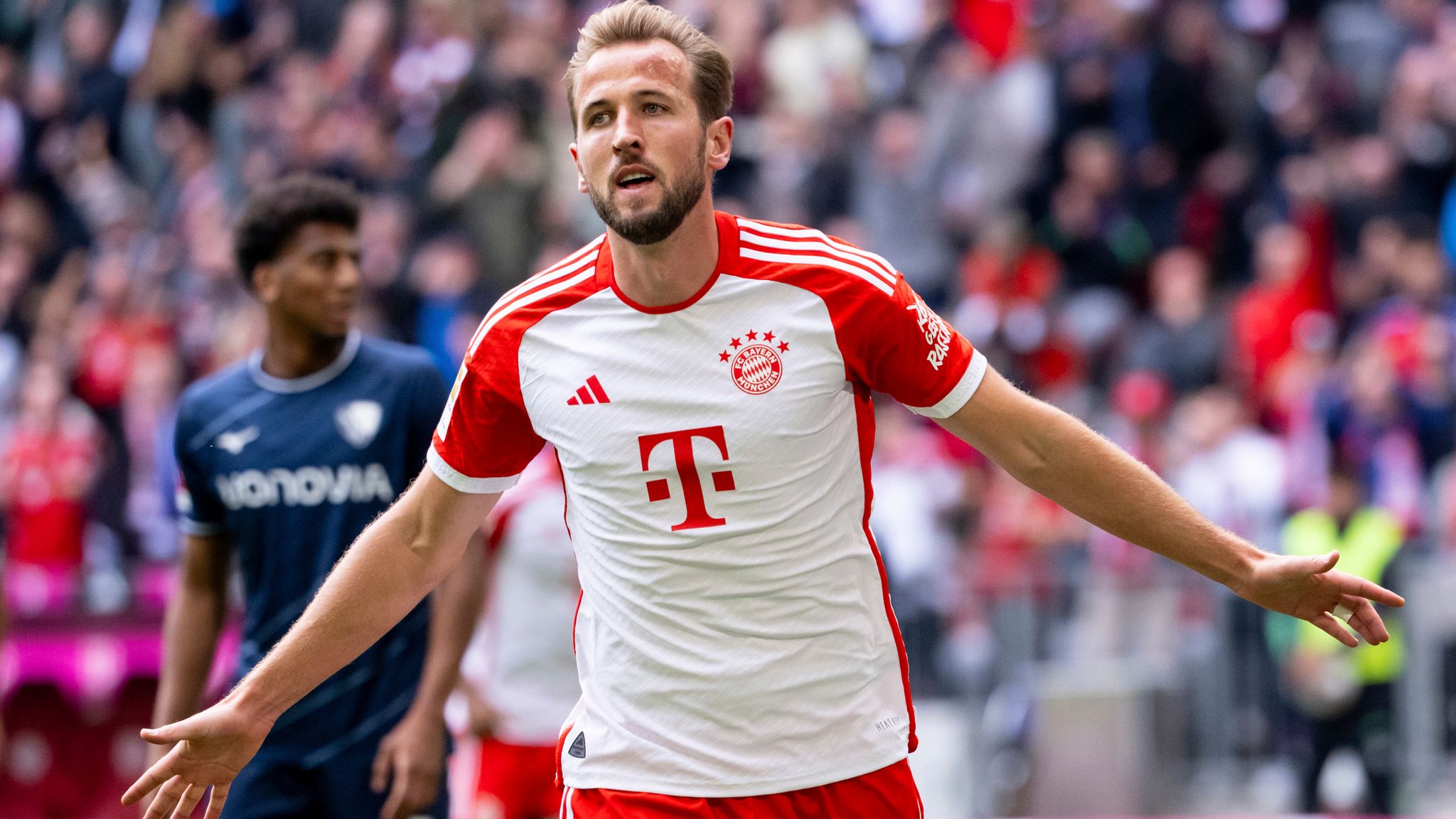The Bundesliga 2025 season has been defined by attacking brilliance, with forwards delivering decisive moments that shaped the title race and pushed clubs to new levels. German football is widely recognized for its high intensity, tactical discipline, and passionate fan culture, but this season the spotlight has fallen on the players leading the front line. From reliable strikers with proven goal scoring records to dynamic young attackers stepping into the spotlight, the competition has been fierce across the league.
The race for the Torjägerkanone has once again shown how valuable clinical finishing and creativity are in a league where every point matters. Some players have stood out for their ability to score consistently in big matches, while others impressed with versatility by creating opportunities as well as converting them. Whether it is Bayern Munich aiming for dominance, Borussia Dortmund pushing their attacking philosophy, or Bayer Leverkusen continuing their rise, each top club has relied on a forward capable of producing defining performances.
This ranking of the top ten forwards in the Bundesliga 2025 highlights the names that shaped the season. It examines their influence, their goal contributions, and the unique qualities that make them essential figures in German football’s most competitive campaign in years.
Top Ten Best Forwards In Bundesliga 2025
10. Victor Boniface — Bayer Leverkusen
Victor Boniface arrived with a reputation for powerful running and clinical finishing and throughout the 2024 25 campaign he proved those traits were more than potential. He combined direct forward play with quick decision making in crowded penalty areas, turning tight half chances into meaningful strikes. Boniface’s first touch allowed him to control flick ons and contested crosses and his frame made him a consistent aerial threat at the near post. Off the ball he offered useful movement that dragged centre backs out of position and opened lanes for Leverkusen’s creative midfield to exploit.
In buildup phases he showed a growing comfort playing with his back to goal, laying off precise passes and starting overloads on the left side. When Leverkusen needed rapid counters he was often the chosen outlet, using acceleration to escape close marking and convert breakaway situations. His season balanced instinctive finishing with a willingness to work for the team, making him an efficient attacking piece in one of Europe’s most dynamic forward lines.
9. Karim Adeyemi — Borussia Dortmund

Karim Adeyemi’s blend of speed and clever timing made him a standout figure for Borussia Dortmund in 2024 25. He often operated from wide channels but cut inside with an eye for goal, combining rapid first steps with deft close control. Adeyemi’s runs behind the defence created vertical options for his team and forced opponents to remain compact, which in turn opened pockets for attacking midfield runners.
He developed a greater consistency in finishing from the edge of the box and on low driven attempts, and his composure under pressure improved as the season progressed. Adeyemi also contributed defensively by pressing from the front and helping trigger quick turnovers that led to chances in transition. His style suited Dortmund’s aggressive attacking philosophy and made him an attractive figure in discussions about the league’s most dangerous young forwards. The season underlined his potential to be both a creator and a regular scorer at the highest level.
8. Serge Gnabry — Bayern Munich

Serge Gnabry provided Bayern with experience, clever movement and a steady scoring touch across the campaign. When called upon he used subtle changes of pace and body feints to create separation from markers and to finish in tight areas. Gnabry’s ability to drift into half spaces gave Bayern multiple avenues to attack and his late timing into the box frequently produced high value chances. He combined tactical intelligence with the capacity to deliver moments of individual quality, such as bending finishes or composed one touch shots in crowded penalty areas.
At times he functioned as a secondary striker in pressing phases and at others he stretched play wide to produce crossing opportunities. That versatility allowed managers to rotate tactical shapes without sacrificing offensive creativity, and his contributions added depth to Bayern’s relentless attacking output. Across the season he remained a dependable option for decisive match moments.
7. Ermedin Demirović — VfB Stuttgart

Ermedin Demirović’s season with Stuttgart showed how a striker with smart movement and efficient finishing can lift a team. He timed late runs into the six yard area to perfection, turning second chance situations into goals and punishing missed clearances. Demirović also demonstrated a growing tactical maturity by pressing in structured waves to drive opponents into mistakes and then exploiting the space that followed.
His finishing technique leaned toward accuracy rather than brute power and he often favoured composed placements when space was limited. In buildup play he provided useful lay offs to advancing midfielders and helped his side keep possession in the final third during sustained spells. Those qualities made him a reliable focal point and a forward who consistently delivered when matches were tight and chances scarce. His season combined practical finishing with work rate and that blend paid dividends for Stuttgart’s attacking identity.
6. Tim Kleindienst — Borussia Mönchengladbach

Tim Kleindienst embodied the modern target man who can both finish and create. His hold up play allowed Gladbach to bring runners into the box and his soft first touch turned contested aerials into immediate passing options. Kleindienst excelled in physical duels yet under pressure kept the ball and made intelligent lay offs for players arriving late. He also displayed a knack for getting into the right spaces at the right time, taking advantage of diagonal switches and quick transitions.
His goals often came from simple but decisive movements in crowded areas and from well timed flick ons at the near post. In matches that demanded patience he offered calm finishing and timely positioning, while in open games his presence gave teammates a clear target to aim for. That balance between robust physical attributes and technical control made him a key element of Gladbach’s forward structure and an impactful contributor across the season.
5. Luis Díaz — Bayern Munich

Luis Díaz added a different dimension to Bayern’s frontline by bringing directness and unpredictability. Quick to change tempo and light on his feet, he thrived in one on one situations where his ability to cut inside produced dangerous shooting angles. Díaz’s movement off the ball proved vital in opening channels for overlapping full backs and his timing in arriving at the edge of the box often unsettled defenders.
Beyond his dribbling he displayed an improved eye for the final pass, linking up effectively with Bayern’s creative players and contributing to chance creation as well as scoring. In transition he became a go to outlet, turning quick counters into high percentage opportunities. Díaz’s multifaceted approach combined pace with creativity and that mixture helped Bayern vary their attacking rhythms throughout the campaign. His presence gave opponents another complex problem to solve when defending Bayern’s fluid front line.
4. Patrik Schick — Bayer Leverkusen

Patrik Schick produced a campaign built on ruthless finishing and intelligent timing. His array of strikes ranged from low angled placements to long distance efforts and his ability to score in clusters changed match outcomes repeatedly. Schick’s movement into the box was precise, often arriving late to meet crosses or to finish off rebounds with clinical accuracy. He also showed the capacity to use his body cleverly to shield the ball and create half chances for himself in tight spaces.
When Leverkusen required a cutting edge he delivered multiple goal performances that swung momentum and added firepower to a side that relied on swift midfield interplay. His consistency in converting chances and his flair for producing spectacular finishes placed him among Europe’s most efficient forwards that season. Teams facing Leverkusen had to account for his unpredictability inside the area.
3. Michael Olise — Bayern Munich

Michael Olise broke into the top three through a blend of vision, creativity and end product that altered Bayern’s attacking profile. He finished the season with eye catching assist numbers while also contributing important goals, becoming both creator and occasional goal getter in equal measure. Olise’s dribbling and ability to cut through defensive lines with a precise pass made him central to Bayern’s best attacking patterns.
He regularly created high quality chances for teammates and his late decisive contributions in tight games became a hallmark of the campaign. Beyond raw numbers his timing and spatial understanding set him apart; he knew when to drop into pockets and when to accelerate into the area to receive the killer ball. Voted by many fans as Bayern’s standout new arrival, his blend of flair and productivity made him one of the most talked about attacking talents in Germany that season.
2. Serhou Guirassy — Borussia Dortmund

Serhou Guirassy’s move to Dortmund paid immediate dividends as he combined aerial dominance with sharp finishing to become one of the league’s most potent scorers. He offered a clear vertical threat with incisive runs behind defences and a capacity to convert second phase chances inside crowded areas. Guirassy’s movement often disrupted marking schemes, creating interior pockets for Dortmund’s creators to exploit.
He also proved reliable on set pieces, using his physical presence to win headers at the far post. Beyond scoring he linked play by bringing midfield runners into space and by directing flick ons that opened goal scoring opportunities for teammates. His consistent delivery of high value goals made him central to Dortmund’s tactical approach and a key figure in the title race.
1. Harry Kane — Bayern Munich

Harry Kane closed the season as the league’s top scorer, capturing the Torjägerkanone and once again proving his place as the most complete striker in the division. His finishing came from a wide palette of methods including clinical one on one strikes, composed penalties and authoritative headers. Kane also contributed significantly to build up play, dropping deep to link midfield to attack and producing assists for his wide partners.
That dual role of scorer and creator meant he shaped Bayern’s attacking tempo and often decided the outcome of headline fixtures. He produced multiple standout performances across the season and his consistency across all competitions gave Bayern the cutting edge they needed. Kane’s blend of intelligence, finishing and physical timing made him the natural choice for the number one position in the Bundesliga 2025 forward rankings.

